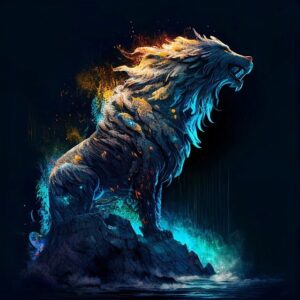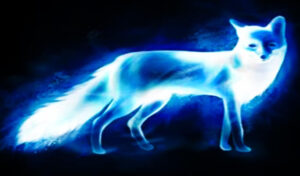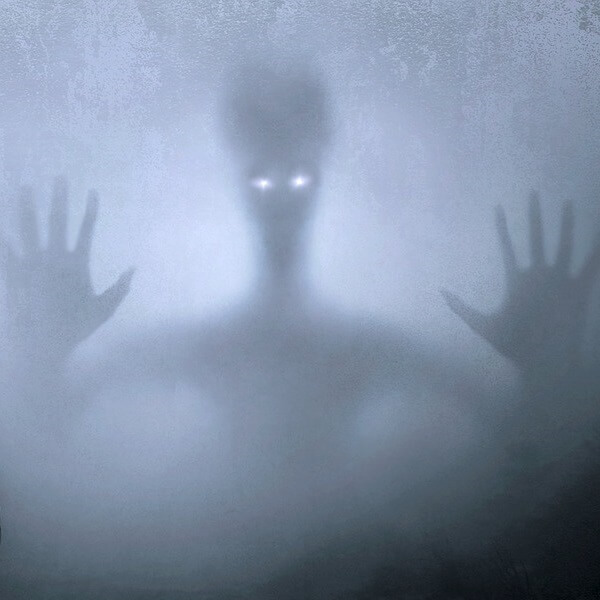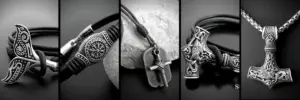In the ancient Norse world, people believed each person had a supernatural guardian spirit called a fylgja that accompanied them throughout life. The fylgja’s nature was complex and mysterious, taking both human and animal forms, these enigmatic shapeshifting spirits represented a deep connection linking the individual, their family lineage, and inexorable fate.
Key Points:
- The fylgja was a supernatural guardian spirit believed to accompany each person, representing their fate and fortune.
- Fylgjur manifested in both zoomorphic (animal) and anthropomorphic (human) forms, their shapeshifting nature reflecting the individual’s inner self.
- Seeing one’s fylgja, especially in waking life, was considered an ominous omen foretelling impending death.
- Fylgjur were strongly associated with transitional thresholds like birth and death, appearing in dreams or visions to impart guidance.
- Female fylgjur called fylgukona acted as ancestral matriarchal spirits watching over women and family bloodlines.
What Are The Fylgja?
The Old Norse term “fylgja” literally means “someone that accompanies.” It refers to a spirit being or animal that lives outside of the physical body of a person, yet remains intimately connected to them. The fylgja usually takes the form of an animal or female entity that reflects something intrinsic about the character, destiny, and fortune of the individual.
People could have multiple fylgjur, some visible and others invisible. The number of visible fylgjur for an individual was limited, but they were thought to have an unlimited number of invisible fylgja spirits watching over them.
In Norse folklore, each family or clan was also watched over by ancestral female guardian spirits known as “hamingjur.” The hamingja was responsible for overseeing the family’s luck and prosperity. When a family member died, their individual fylgja could be passed down to a living relative, thereby continuing the ancestral lineage.
Animal Forms and Symbolism
The animal form taken on by a fylgja often corresponded to the nature of the person it represented. For instance, great leaders and chiefs were known to have fylgjur in the form of an ox, boar, or goat, representing a tame and steady nature. On the other hand, a craftier person’s fylgja might appear as a fox or wolf, with a more cunning essence.

Eagles, bears, lions and serpents were considered aggressive fylgja, appropriate for fierce warriors and battle leaders. Deer, hawks, and falcons symbolized nobility and pride. Also, in some sagas, evil sorcerers had fox fylgjur, reflecting their sly and devious magic.
The animal form of the fylgja was not a “spirit animal” in the modern sense. Rather, it was a sacred representation of the flow of ancestral energies and familial bonds within an individual’s fate.
Fylgja Sightings and Portents
In Norse legends, accounts of fylgja sightings often served as portents of the future. The fylgjur would make appearances in dreams, visions, or before momentous events, offering glimpses of destiny yet to come.
Seeing one’s own fylgja was an ominous sign foretelling the person’s death. In the Poetic Edda’s “Helgakviða Hundingsbana II”, the fylgja of the hero Helgi appears to his brother Hethin in the form of a troll-woman, warning that Helgi will soon perish.
The fylgjur also showed up before battles or difficult journeys, giving guidance and courage to their charges. However, they provided insight, not action; the course of fate could be glimpsed through the fylgja but not changed.
Fylgjur in Death and Birth
The fylgja has a profound connection to both death and birth. In many tales, it appears right before or after a person’s death, or presages a difficult birth.
Some stories describe the fylgja taking on animal form and consuming the afterbirth following labor. This signifies the deep interweaving of life, death, and destiny embodied in the sacred spirit guardian.
When an individual died, their protective fylgja was thought to often pass to a living relative, thereby continuing to oversee the family’s fortune. This passing down of ancestral spirits blessed future generations with the wisdom and virtues of those who came before.
Human Forms and Matriarchal Bonds
Fylgjur could sometimes appear in human-like form, particularly female. These fylgjukonur or “fylgja women” watched over individuals, families, clans and lineages much like ancestral mothers.
The human fylgja was a guardian spirit intimately connected to femininity, matriarchy, and the bonds between women across generations. She offered visions, prophecies, comfort and protection just as a living grandmother, mother or aunt would provide.
When the fylgja appeared as a woman, she was considered a special ancestral Disir – a revered female goddess associated with fate and death. The fylgjukona maintained the spiritual connection between the living and the beloved female elders who came before them.
The Fylgja in Dreams and Visions
Dream encounters with the fylgja were profoundly meaningful in Old Norse culture. The blurry veil between worlds at night allowed for contact with spirits and divination.
In the sagas, fylgjur often arrive in dreams in human form to impart wisdom, prophecies, warnings, and inspiration to characters navigating complex fates. The gift of the dream vision was treated seriously, with guidance from the fylgja spirit taken as a sign of blessing from the ancestors.
Through dreams, the living could also show proper reverence to the fylgja, requesting protection, giving thanks, and affirming their desire for the spirit to continue watching over them. Honoring the fylgja ensured ancestral powers and feminine energies continued flowing strongly through one’s life.
Fylgjur in Norse Mythology and Folklore
References to fylgjur appear throughout Norse mythology and Icelandic folklore. They are featured particularly prominently in the medieval Sagas of Icelanders, or “Íslendingasögur.”
In the Völsunga Saga, a sea fylgja in the form of a swan protects King Sigmund and gives prophetic advice. Valkyrie fylgjur oversee fierce battles between rival Norse clans in Njal’s Saga and Egil’s Saga. Shape-shifting berserkers manifest their animal fylgjur in battle-trances.
Images of the ancestral fylgja spirit pervade the Nordic cultural imagination, they represent the intimate dance between individual destiny and invisible forces of fate governing our lives. The fylgjur symbolize the spiritual bonds connecting family members across time, and the lasting imprint left by female ancestors upon the generations that follow.
Evolution Under Christianity
When Christianity began spreading through Norse lands, the native concept of the fylgja spirit underwent changes. The singular guardian angel of Christian belief became conflated with the idea of protective pagan spirit guides.
In some folklore, fylgjur were now bifurcated into “good” Christian fylgjur, and “evil” fylgjur representing the old Norse deities and magic. Yet even in Christianized form, remnants remained of the fylgja’s ancestral and feminine essence.
These stories often emphasized moral choices between pagan and Christian pathways, with the fylgja appearing like a magical conscience urging characters towards righteousness. Here the once amoral nature spirit became associated with abstract ideals of virtue and sin.
Legacy of the Fylgja in Modern Nordic Folklore
Despite profound changes wrought by Christianity, the fylgja concept continues to manifest in Nordic folk beliefs today. Stories are still told in Scandinavian countries of this ancestral guardian that secretly follows and observes over each person’s life.
In modern Iceland, seeing one’s fylgja is an ominous portent of approaching death. A fylgja sighting still suggests contact with the invisible world of spirits, fate, and hidden dimensions of reality.
The animal or human-formed fylgja remains a powerful symbol of the spiritual link between the living and the beloved dead. It represents the lasting imprint ancestors leave upon the destiny of future generations, and the subtle cosmic forces guiding each individual life.
Selecting Your Fylgja Animal
Given the resurgent popularity of Norse mythology and spirituality today, many people enjoy ceremonially selecting their own personal fylgja in animal form. However, it’s important to note that a fylgja was not a casual “spirit animal” in the Norse context.

Rather than randomly picking an animal fylgja for its perceived symbolic traits, take time to deeply reflect upon connections to your ancestry, loved ones who have passed on, and your intimate relationship with personal destiny.
Consider your fylgja a sacred spirit guide to be discovered, not arbitrarily chosen. Let your animal fylgja find you through meditation, dreams, and soul-searching connection with your ancestral line. Approach this process with patience, humility, and care.
Conclusion
The mysterious fylgja spirits remain an intriguing fixture of Norse mythology that still inform Scandinavian folk culture today. They represent the spiritual bonds connecting us to family, fate, and forces seen and unseen guiding our lives.
The fylgja is a reminder that we walk in the footsteps of ancestors whose presence yet echoes, and we each tread an uncertain path into the future, gazed upon by watchful eyes. By honoring this ancestral guardian, we affirm the enduring place we hold amidst the great chain of being stretching across time.
Shop Norse Jewelry
Are passionate about Norse Mythology?
Finding the ideal piece of Norse Jewelry can be challenging and time-consuming, especially if you lack inspiration or don’t know where to look.
Surflegacy, has you covered. We have a wide range of Handmade Jewelry in various styles, shapes, colors, and materials, to accentuate your Norse spirit and look. Do not hesitate to visit our selection HERE
Whatever you wear, you’ll find the ideal trendy piece to complement your wardrobe. Our jewelry is designed to be worn every day, no matter where you go or what season is. Are you ready to step up your wardrobe game?




